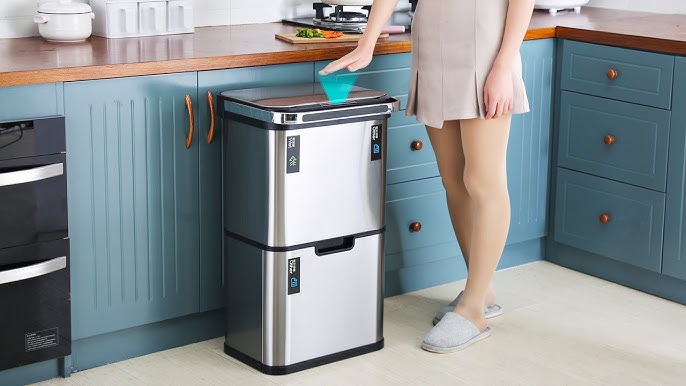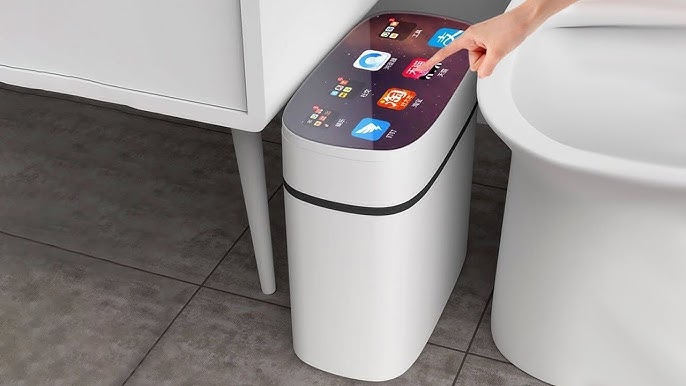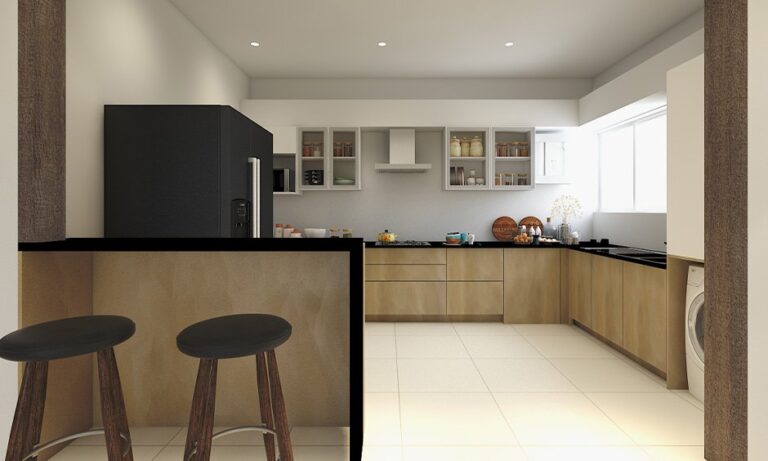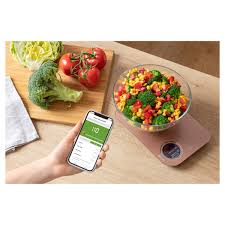Smart kitchen trash cans are more than just waste disposal units—they are designed to enhance convenience, hygiene, and efficiency in managing kitchen waste. When choosing a smart trash can, consider the following features to ensure you select one that best fits your needs.
1. Touchless Operation
Benefits
- Hands-Free Use: Touchless sensors allow you to open the lid without touching it, which is ideal for maintaining cleanliness when your hands are full or dirty.
- Hygiene: Reduces the spread of germs and bacteria by minimizing contact.
Key Considerations
- Sensor Range: Check the sensor’s range and responsiveness to ensure reliable operation.
- Battery Life: Ensure that the sensor’s battery life is sufficient or opt for models with rechargeable batteries.
2. Odor Control

Benefits
- Freshness: Odor control features help keep unpleasant smells contained, which is particularly useful in the kitchen where food waste can produce strong odors.
- Comfort: Enhances the overall comfort of your kitchen environment by reducing bad smells.
Key Considerations
- Activated Carbon Filters: Many smart trash cans use activated carbon filters to neutralize odors.
- Seal Mechanisms: Look for trash cans with tight-sealing lids that help trap odors inside.
3. Smart Notifications
Benefits
- Convenience: Receive alerts when the trash can is full or needs to be emptied, preventing overflow and ensuring timely waste management.
- Efficiency: Helps you manage waste more effectively and maintain cleanliness.
Key Considerations
- Connectivity: Ensure that the trash can connects to your smartphone or smart home system to receive notifications.
- App Integration: Check if the trash can integrates with a dedicated app for managing notifications and settings.
4. Hands-Free Lid Opening
Benefits
- Ease of Use: Automatically opens the lid when you approach or when a sensor detects motion, making disposal easier.
- Efficiency: Saves time and effort compared to manual lid opening.
Key Considerations
- Sensor Accuracy: Look for models with reliable sensors that open the lid at the right time.
- Lid Operation Speed: Ensure that the lid opens and closes smoothly and quickly to handle multiple disposals efficiently.
5. Built-In Trash Compactor
Benefits
- Space Efficiency: A trash compactor reduces the volume of waste, allowing you to use fewer trash bags and save space.
- Less Frequent Emptying: Compresses waste to increase the capacity of the trash can, reducing the frequency of emptying.
Key Considerations
- Compaction Strength: Check the strength and effectiveness of the compaction mechanism.
- Ease of Use: Ensure that the compaction feature is easy to operate and maintain.
6. Durable and Easy-to-Clean Materials
Benefits
- Longevity: Durable materials ensure that the trash can withstands daily use and remains in good condition over time.
- Hygiene: Easy-to-clean surfaces help maintain cleanliness and prevent the build-up of grime and odors.
Key Considerations
- Material Type: Opt for materials such as stainless steel or high-quality plastic that are resistant to stains and odors.
- Cleaning Features: Look for models with smooth surfaces and removable liners for easier cleaning.
7. Built-In Recycling Features
Benefits
- Environmental Impact: Helps you separate recyclables from regular waste, promoting better recycling practices and reducing environmental impact.
- Convenience: Simplifies waste sorting and disposal, making it easier to manage different types of waste.
Key Considerations
- Separate Compartments: Choose trash cans with separate compartments for recyclables and general waste.
- Labeling: Ensure that compartments are clearly labeled to facilitate correct waste sorting.
8. Capacity and Size
Benefits
- Fit for Purpose: A trash can with the right capacity ensures that it meets your household’s needs without requiring constant emptying.
- Space Efficiency: Choose a size that fits your kitchen space without being obtrusive.
Key Considerations
- Volume: Assess the capacity of the trash can in relation to your household’s waste generation.
- Dimensions: Measure the available space in your kitchen to ensure a proper fit.
9. User-Friendly Controls
Benefits
- Ease of Operation: Simple and intuitive controls make it easier to operate the trash can and adjust settings.
- Customizable Features: Allows you to personalize the trash can’s functions according to your preferences.
Key Considerations
- Control Panel: Look for a well-designed control panel with clearly labeled buttons or touchscreen options.
- App Functionality: Ensure that the accompanying app, if available, is user-friendly and offers the necessary features.
10. Energy Efficiency
Benefits
- Cost Savings: Energy-efficient models consume less power, reducing electricity costs and contributing to a more sustainable home.
- Environmental Impact: Lower energy consumption helps reduce your overall environmental footprint.
Key Considerations
- Power Source: Check if the trash can operates on low energy and consider models with rechargeable batteries or efficient power usage.
- Energy Ratings: Look for appliances with energy-saving certifications or ratings.
Conclusion
Selecting the right smart kitchen trash can involves considering various features that enhance convenience, hygiene, and efficiency. By evaluating aspects such as touchless operation, odor control, smart notifications, and durability, you can choose a trash can that meets your needs and fits seamlessly into your kitchen. Investing in a smart trash can with these advanced features will streamline your waste management routine, making your kitchen cleaner and more enjoyable to use.




